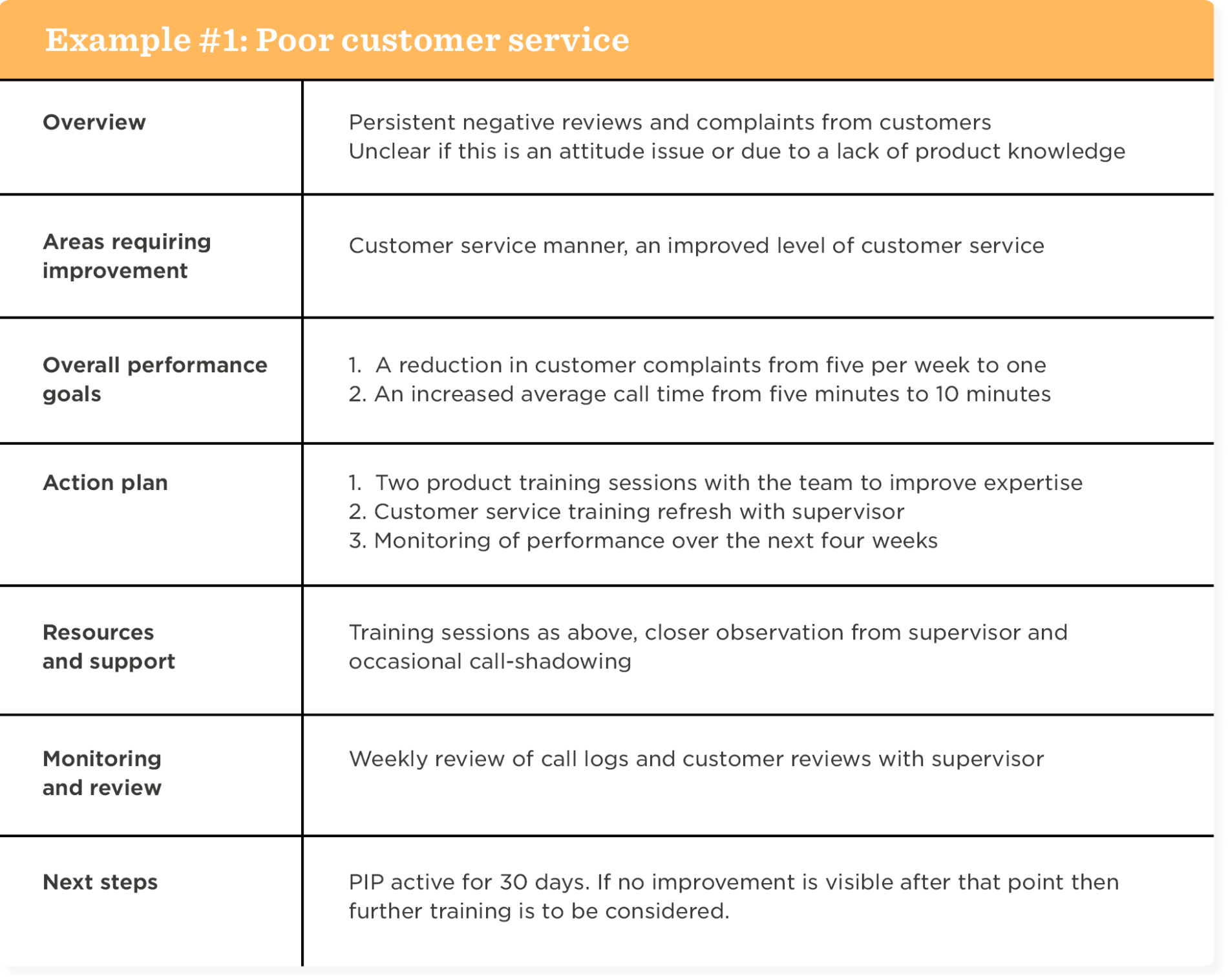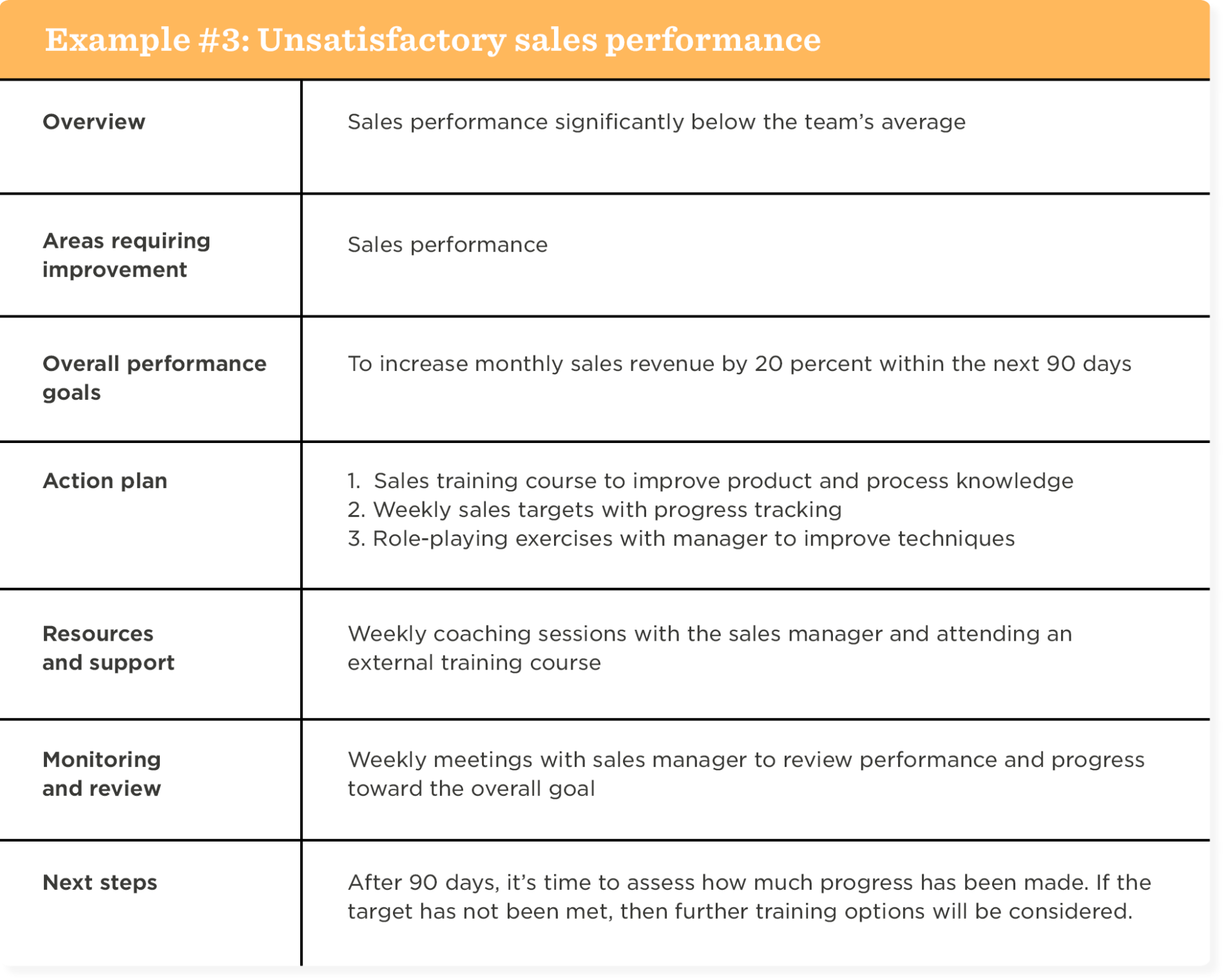

When people are struggling to meet the expectations of their job, it’s HR’s task to help them get back on track.
That means identifying what’s been going wrong, and laying out clear, measurable goals for improvement. Depending on the situation, it may also be necessary to provide additional motivation by detailing the potential consequences of output remaining static.
This is where a performance improvement plan (PIP) comes in. It’s a structured document that outlines specific areas of concern regarding someone’s performance. A PIP helps both employers and professionals move forward, by detailing an organized approach to performance management, free from ambiguity.
An effective PIP will identify problems, set expectations, and chart actionable steps the individual can take to close performance gaps. The plan may also outline the consequences if they do not meet the objectives, helping to align the individual’s goals with the wider team’s objectives and giving a sense of purpose and direction.
Most usefully, a PIP encourages open communication, fostering collaboration as you work through any issues together. It provides a clear measurement of the improved performance you wish to see, giving everyone a better chance of achieving that outcome.
In this guide, we’re going to look at how to write a PIP and share a downloadable employee performance improvement plan template for you to customize.

Starting your own performance improvement plan from scratch can be a time-consuming task. Instead, a template can save you time and help you treat PIPs equitably across your organization.
Using a PIP template helps to improve your:
Effectively establishing a PIP template at your organization helps to streamline your HR processes, ensures consistency and accountability, and provides a clear structure for team members and managers alike to follow.
The best performance improvement plan templates tell the story of a performance evaluation. Make sure your PIP plan includes the following components:
Crucially, a well-crafted performance improvement plan aims to improve someone’s work rather than punish them. This means it’s important to communicate the grounds for instigating the PIP openly and to establish achievable outcomes.
Done right, you’re more likely to help people reach their full potential and provide a positive contribution to your organization.
Here are our top tips for crafting an effective performance improvement plan:
A positive PIP outcome depends on the individual being given specific feedback on their performance, and an achievable path to successfully improving their work.
As a result, a customized plan is crucial for providing a tailored roadmap for each specific situation.
Customization ensures that the identified performance issues are accurately addressed, and the goals set are realistic and relevant. It also demonstrates a personalized approach, fostering employee engagement and commitment to the improvement process.
By adapting the PIP template to the specific circumstances and objectives, you can maximize the likelihood of successful performance improvement and overall employee growth.

A truly effective employee development plan template will be tailored to the specific needs of the professional to whom it relates. Our sample performance improvement plan is a great place to get started. However, feel free to customize it to match your requirements and company policies.


PIPs come in many different forms, depending on the nature of your business and the specific circumstances of each case. Here are key excerpts from some of the most common completed PIP examples that HR teams face, such as a performance improvement plan for attendance issues or missed sales targets.



Successfully implementing a performance improvement plan at work requires clear communication throughout. Everyone involved in the process needs to understand their role and responsibilities and the desired outcomes.
It’s also important to regularly use an employee performance review checklist so that you can monitor progress, with ongoing feedback and flexibility to make adjustments where necessary. As you run more PIPs, take lessons on board and be ready to modify your template and approach.
With a coherent training plan supporting the PIP, you’re more likely to set your team up for success. Provide proper resourcing, communicate openly throughout, and consider using employee performance management software and a successful PIP process is just around the corner.